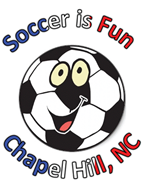A new soccer started. After a summer break it is important to bring the players back into the season routine. A good way to do that is to hold a preparation camp, which will have the players to get to know their new teammates, and remind them the importance of a good warm-up, including some stretching, and more importantly the essential ball mastery skills required to control the ball in any situation. Bringing back to players memory the 4 developmental stages of a soccer player : (1)
Master the ball, (2) Play together – Team, (3) Play against an opponent,
and (4) Play within a system – Tactic will help them understand the season practice plan proposed by their coach.
Let us start with the warm-up:
The warm-up should be a low level activity, such as a
brisk walk or a slow jog, which should be completed prior to stretching and
more strenuous exercise.
Passive
Warm-up: The
main goal of passive warm-up is to increase body temperature, either total body
temperature or local body temperature, without physical activity. In passive
warm-up the body temperature is usually increased by some external means, such
as wearing heavy apparel, like a sweatshirt, and/or a massage with a topical
exercise rub, such as Ben-Gay. One of the advantages of using a passive means
of warm-up is that energy is not expended in the warm-up activity. However, for
best results it's recommended that passive warm-up be used in combination with
active warm-up.
Active
warm-up: Is
composed of two types: general and sports specific warm-up. The general or
non-specific warm-up utilizes low intensity movements such as walking or slow
jogging general warm-up, involving low level activity, is usually more
effective than passive warm-up in increasing deep muscle temperature. Specific
warm-up exercises actually involve the body parts that will be used in the
subsequent competitive event. An example would be swinging a tennis racket in a
practice stroke. The advantage of the specific warm-up is that the temperature
is more effectively increased in the specific body parts that are to be used.
I.General Warm up
II.Soccer Specific Warm up
The objective of the warm-up is to raise
total body temperature and muscle temperature to prepare the entire body for
vigorous activity.
Then some Stretching:
THE DIFFERENCE BETWEEN WARM-UP and
STRETCHING:
There is an important difference between
warm-up and stretching. Many people stretch and call it warm-up. This is
incorrect. It is important to warm-up before stretching. If one stretches the
muscles without prior warm-up, the muscles are cold and are more prone to
injury, such as muscle tear or strain. Before exercising, begin with a warm-up
period to raise the body temperature. You want to get the heart pumping and
increase blood flow to the muscles before stretching. Slow running in place, a
slow aerobic dance, or a walk-jog (all with ball), and the application of an
external exercise rub, is an ideal warm-up regimen to help prepare the muscles
for stretching.
Those are some examples of moves/positions that could be used to compose the warm-up and stretching session of a soccer practice, or prior to a game.
Presenting the importance of the warm-up and the stretching to your youth soccer players is important, since some of them may not have already adopted this healthy sport habit, or may consider that they do not need it. It is also important for the season to start it right, and therefore reduce the risks of injuries during practice or games.
Comments and suggestions are encouraged and welcome. I hope this will help.
Those are some examples of moves/positions that could be used to compose the warm-up and stretching session of a soccer practice, or prior to a game.
Presenting the importance of the warm-up and the stretching to your youth soccer players is important, since some of them may not have already adopted this healthy sport habit, or may consider that they do not need it. It is also important for the season to start it right, and therefore reduce the risks of injuries during practice or games.
Comments and suggestions are encouraged and welcome. I hope this will help.
